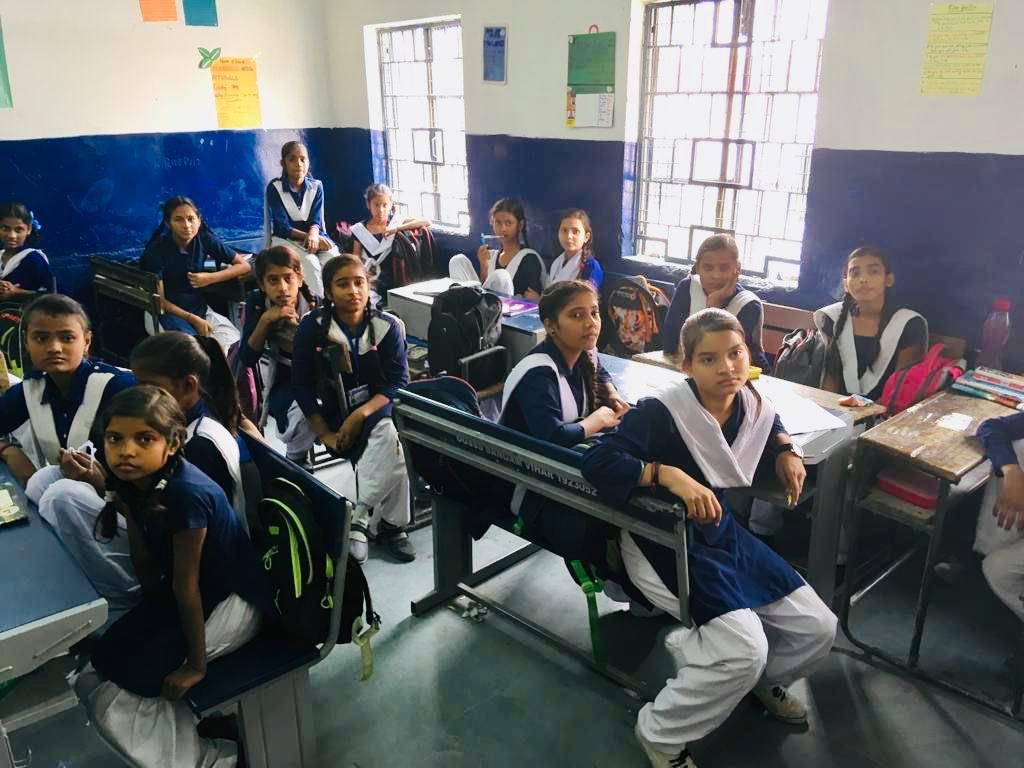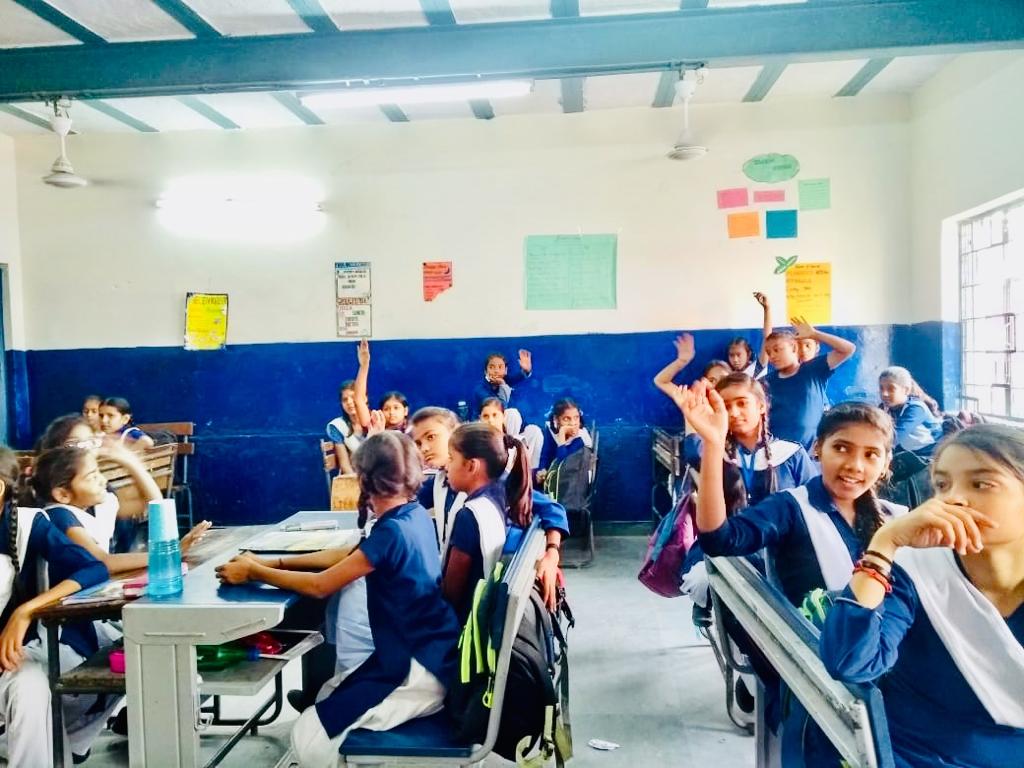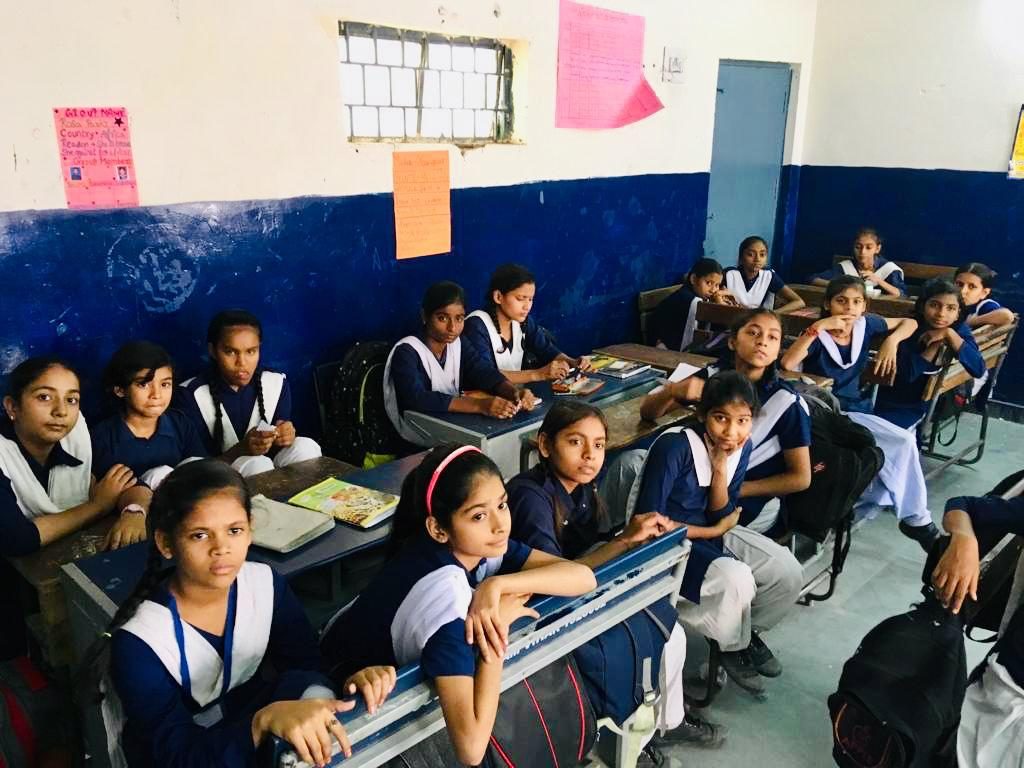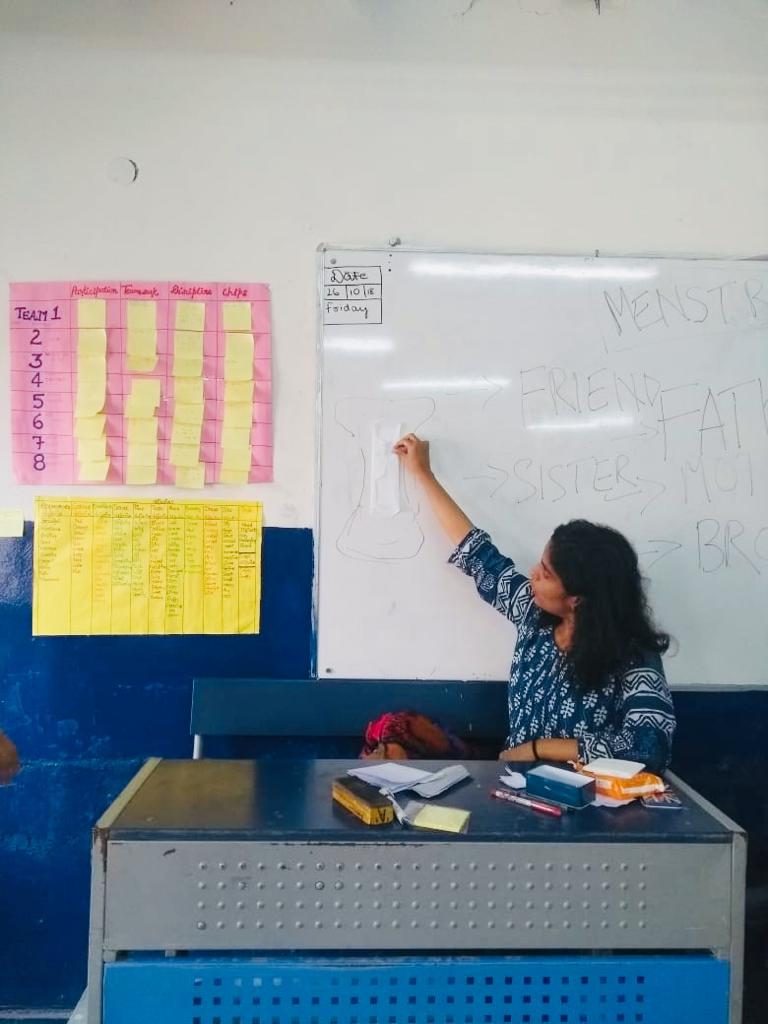As part of our Right to Menstrual Health Project, we recently visited a TFI school in New Delhi’s Sangam Vihar area. Based on our conversations with the VII grade girls of the said Government Senior Secondary School, we realised that there exists a major gap in the knowledge dissemination process vis-a-vis the requisite learning standards in such classrooms, especially with respect to menstrual, sexual and reproductive health of adolescent girls.
But, even if one can let the technical details be, this particular session compelled us to rethink the discourse that our adolescents as well as adults need, in order to make women’s health and hygiene a priority in our country. The lack of educated and responsive dialogue around the process of menstruation turns it into a riddle for most young girls. Schools and even the most sought after classroom programmes don’t seem to plan demonstrative lectures that explain the hygienic usage of sanitary napkins. Even if all girls manage to get access to sanitary pads, most of them won’t know how, when and why to use, replace and dispose them off.
Now if something as basic and essential as period hygiene cannot be learnt by example in a safe classroom environment, we can imagine the cluelessness that surrounds other closely associated and crucial topics of sexual and reproductive health.
Notwithstanding the economical, logistical, social and cultural bottlenecks that plague women’s well being in India, teachers dealing with adolescents need to acknowledge that every time they deprive a young girl of knowledge and awareness around the aforementioned, they are causing her to risk her state of being, while suffering through a plethora of health risks that include, but are not limited to, Malnutrition (Most girls did not know or understand what comprises a healthy diet for them or why they need it at all!), Unhealthy Menstrual Cycles (We met a number of 12 years old girls who reported irregular periods), Unsafe Sexual Intercourse (We understood the necessity to connect menstrual health to sexual and reproductive health when dealing with adolescent girls and how interlinking these concepts is a crucial means to start an engaging and interactive dialogue around the issue), Unwanted Pregnancies (Most girls did not know why they bled every month and what could be the normal or abnormal reasons if they stopped bleeding from one month to the next).
 Through our observations during the time spent at the school, we concluded that it’s possible to engage adolescent girls in an honest conversation that enables them to learn, understand and acknowledge the complexities and needs of their growing bodies as long as the people they are interacting with, do away with their own hesitations and preconceived notions about the “tabooed topics” of the society and not undermine a young girl’s ability to take responsibility for her own health and well being. If two hours spent conversing with one group of adolescents is any figure to go by, we are confident that teachers who get a lot more hours throughout a year, can make a whole lot of difference to how adolescent girls perceive and prioritise their health and well being.
Through our observations during the time spent at the school, we concluded that it’s possible to engage adolescent girls in an honest conversation that enables them to learn, understand and acknowledge the complexities and needs of their growing bodies as long as the people they are interacting with, do away with their own hesitations and preconceived notions about the “tabooed topics” of the society and not undermine a young girl’s ability to take responsibility for her own health and well being. If two hours spent conversing with one group of adolescents is any figure to go by, we are confident that teachers who get a lot more hours throughout a year, can make a whole lot of difference to how adolescent girls perceive and prioritise their health and well being.
It’s important that as a matter of principle, we teach our young girls that any shame that comes their way for heeding to their menstrual, sexual and reproductive health is a dogma that they must dismiss and demand all the nurturing that their bodies need.



